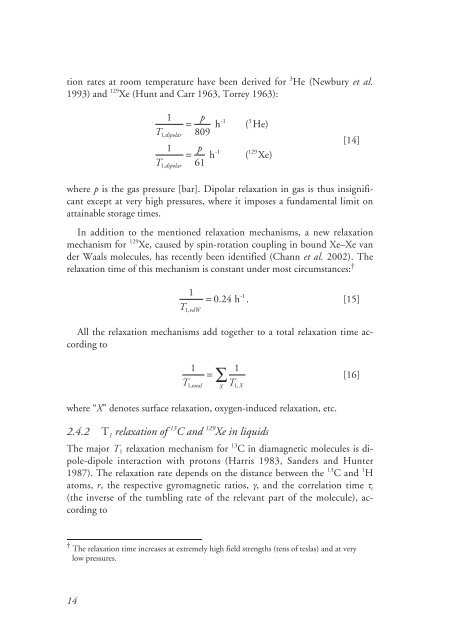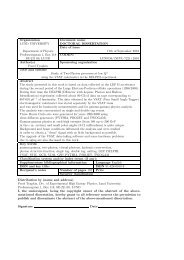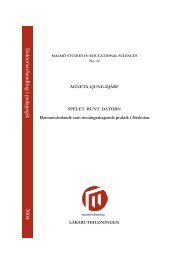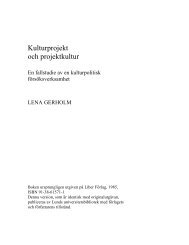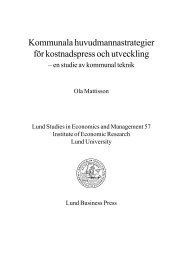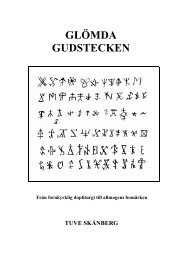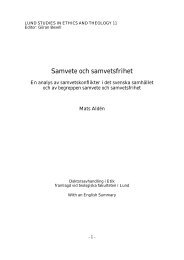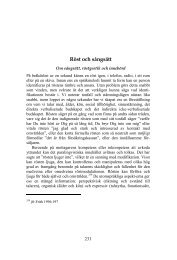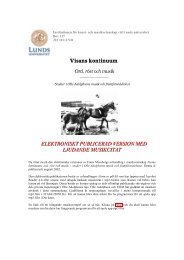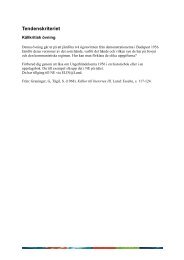Hyperpolarized Nuclei for NMR Imaging and Spectroscopy - Lunds ...
Hyperpolarized Nuclei for NMR Imaging and Spectroscopy - Lunds ...
Hyperpolarized Nuclei for NMR Imaging and Spectroscopy - Lunds ...
Create successful ePaper yourself
Turn your PDF publications into a flip-book with our unique Google optimized e-Paper software.
tion rates at room temperature have been derived <strong>for</strong> 3 He (Newbury et al.<br />
1993) <strong>and</strong> 129 Xe (Hunt <strong>and</strong> Carr 1963, Torrey 1963):<br />
14<br />
T<br />
T<br />
1<br />
1,<br />
dipolar<br />
1<br />
1,<br />
dipolar<br />
p -1<br />
= h<br />
809<br />
3<br />
( He)<br />
p -1<br />
= h<br />
61<br />
129<br />
( Xe)<br />
[14]<br />
where p is the gas pressure [bar]. Dipolar relaxation in gas is thus insignificant<br />
except at very high pressures, where it imposes a fundamental limit on<br />
attainable storage times.<br />
In addition to the mentioned relaxation mechanisms, a new relaxation<br />
mechanism <strong>for</strong> 129 Xe, caused by spin-rotation coupling in bound Xe–Xe van<br />
der Waals molecules, has recently been identified (Chann et al. 2002). The<br />
relaxation time of this mechanism is constant under most circumstances: †<br />
1<br />
T1, vdW<br />
024 .<br />
= h -1 . [15]<br />
All the relaxation mechanisms add together to a total relaxation time according<br />
to<br />
1 1<br />
= ∑ T T<br />
1, total X 1,<br />
X<br />
where “X” denotes surface relaxation, oxygen-induced relaxation, etc.<br />
2.4.2 T 1 relaxation of 13 C <strong>and</strong> 129 Xe in liquids<br />
[16]<br />
The major T 1 relaxation mechanism <strong>for</strong> 13 C in diamagnetic molecules is dipole-dipole<br />
interaction with protons (Harris 1983, S<strong>and</strong>ers <strong>and</strong> Hunter<br />
1987). The relaxation rate depends on the distance between the 13 C <strong>and</strong> 1 H<br />
atoms, r, the respective gyromagnetic ratios, γ, <strong>and</strong> the correlation time τ c<br />
(the inverse of the tumbling rate of the relevant part of the molecule), according<br />
to<br />
†<br />
The relaxation time increases at extremely high field strengths (tens of teslas) <strong>and</strong> at very<br />
low pressures.


